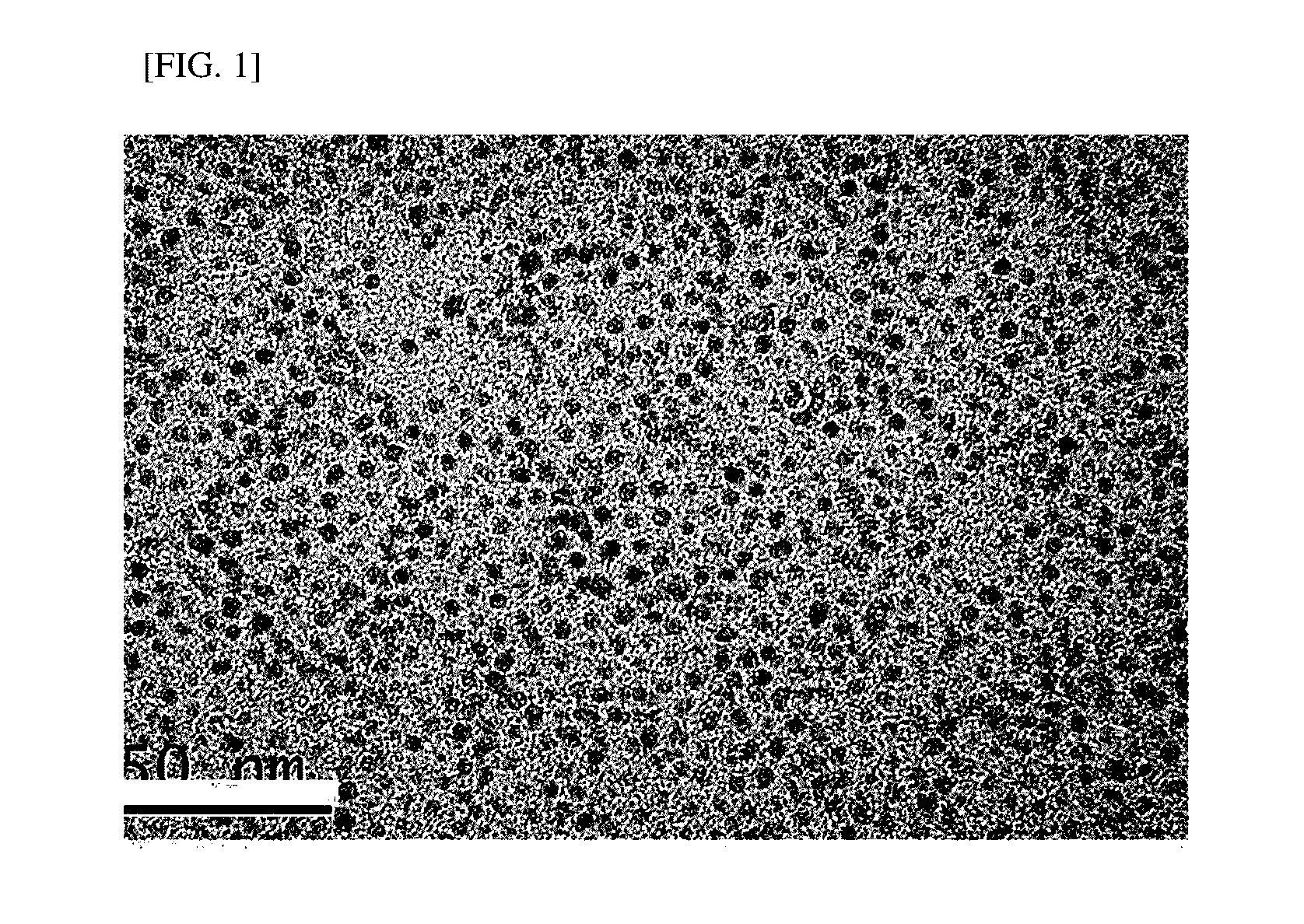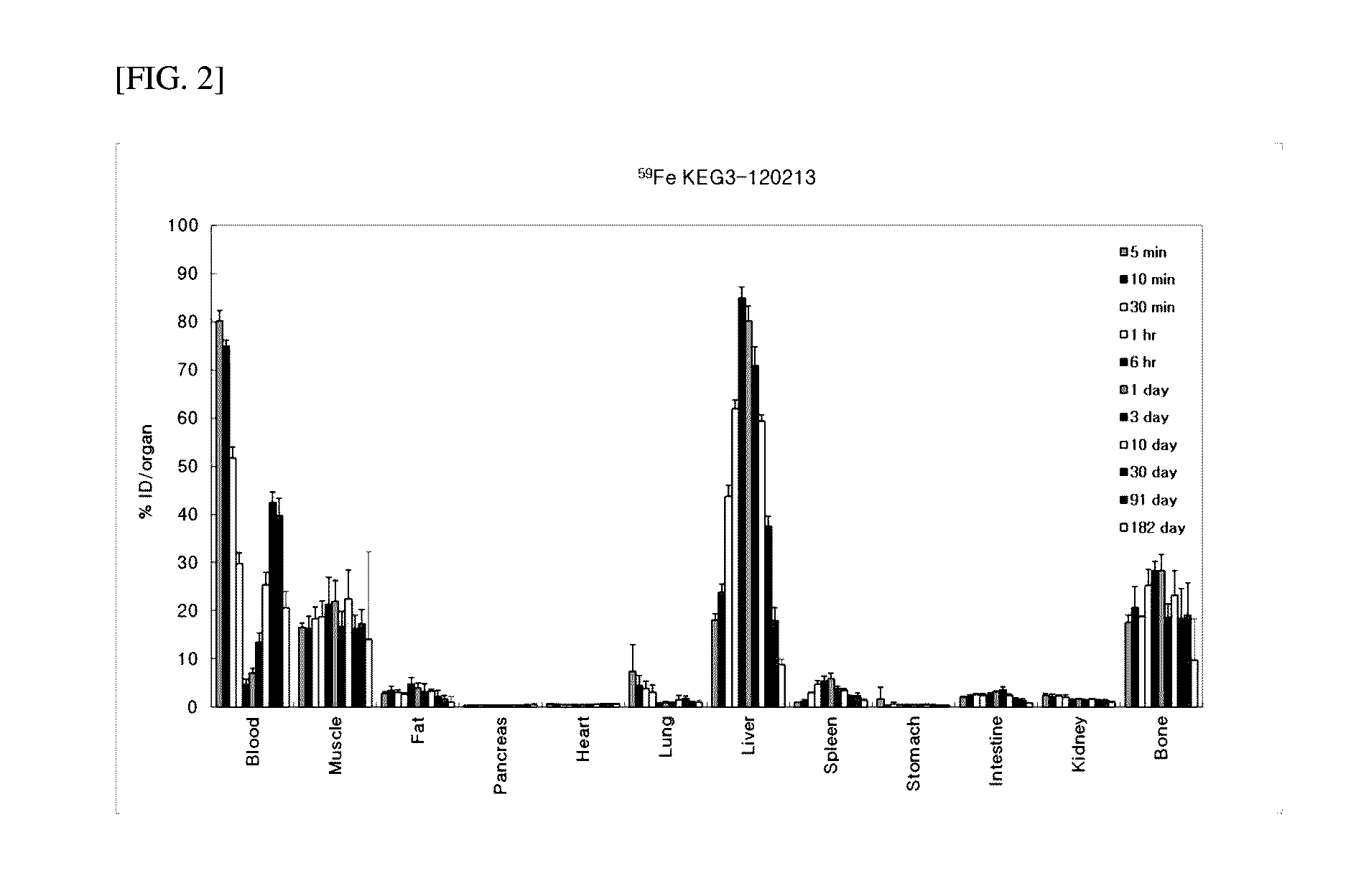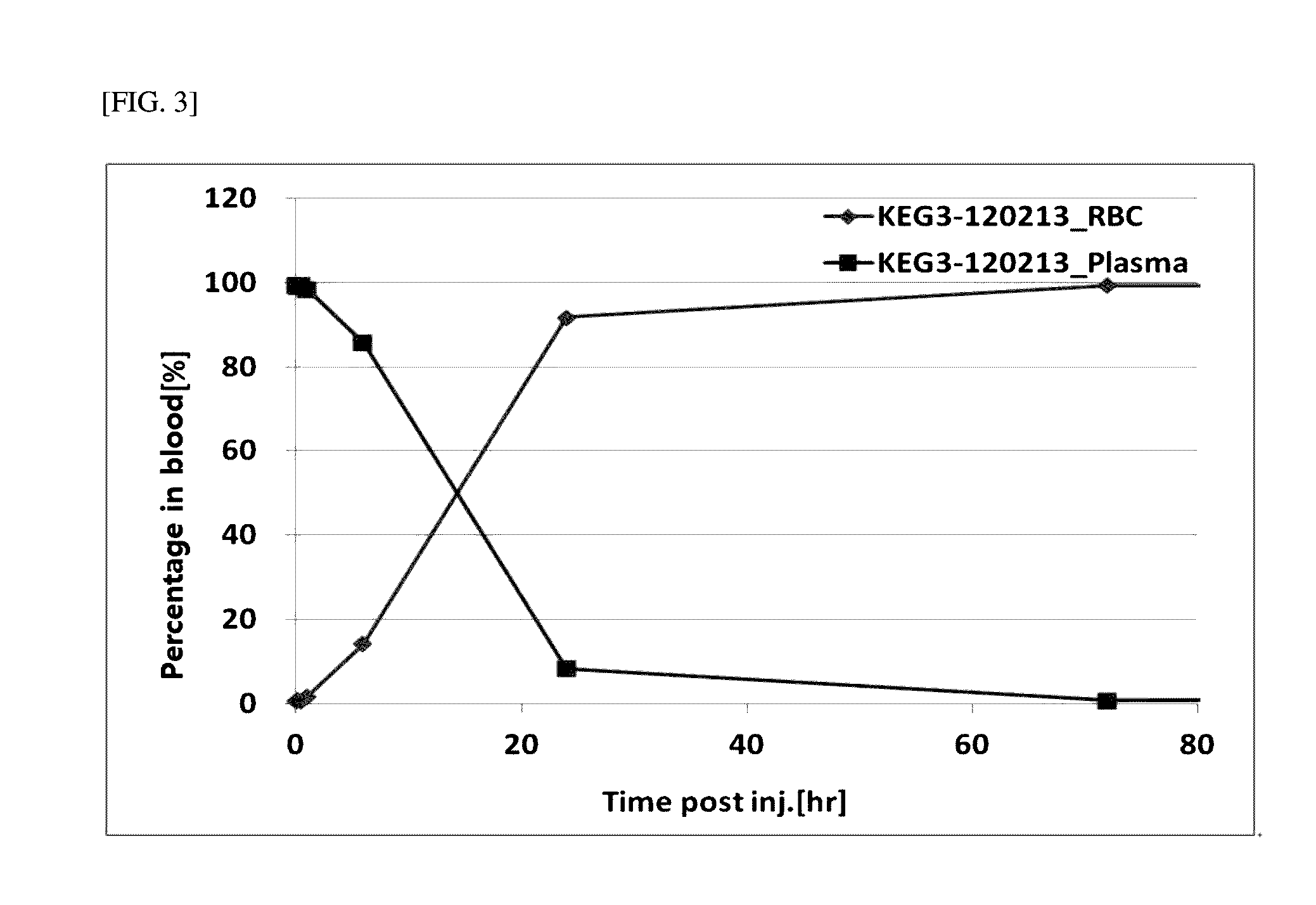Pharmaceutical composition for preventing or treating iron deficiency, comprising iron oxide nanoparticles
- Summary
- Abstract
- Description
- Claims
- Application Information
AI Technical Summary
Benefits of technology
Problems solved by technology
Method used
Image
Examples
example 1
Preparation of Iron Oxide Nanoparticle-Containing Pharmaceutical Composition (KEG3)
[0044]1-1: Preparation of Iron Oxide Nanoparticles Having Particle Size of 3 nm
[0045]1.8 g (2 mmol) of iron oleate, 0.57 g (2 mmol) of oleic acid, and 1.61 g (6 mmol) of oleyl alcohol were mixed with 10 g of diphenyl ether. Then, the mixture was added to a round-bottom flask, and degassed under vacuum at 80° C. for 1 hour. Argon was applied to the flask to maintain an inert atmosphere, and then reaction was allowed while the temperature was raised to 250° C. at a rate of 10° C. / min. As the reaction proceeded, the color of the reactants was found to change to black. After the temperature reached to 250° C., the reaction was allowed for 30 minutes, followed by rapid cooling. The product was washed with excess acetone. Precipitate obtained after washing was dispersed in an organic solvent such as chloroform or hexane.
[0046]FIG. 1 is a photograph showing the result of transmission electron microscopy of t...
example 2
Preparation of Fe-59-Labeled KEG3
[0052]A hydrophilized nanoparticle solution was prepared in the same manner as in Example 1 by using iron oxide nanoparticles which were prepared in the same manner as in Example 1-1, except that 59FeCl3-added Fe-oleate complex was used. Synthesis of iron oxide nanoparticles of about 3 nm was confirmed by transmission electron microscope (TEM). The measurement result after hydrophilization showed that a hydrodynamic diameter of the particle was 14.1 nm.
[0053]Radiation intensity of the Fe-59-labeled iron oxide nanoparticles having a particle size of about 3 nm in the KEG3 pharmaceutical composition prepared in Example 1-3 was measured, and then a normal saline solution (0.9% NaCl aqueous solution) was added to prepare a solution with an iron (Fe) concentration of 1409 μg Fe / mL.
example 3
Iron Oxide Distribution by Fe-59-Labeled KEG3 in Mouse
[0055]0.1 ml of Fe-59-labeled KEG3 solution prepared in Example 3 was injected via the tail vein of 6-week-old ICR mice. The blood, muscle, bone, fat, heart, liver, lung, kidney, intestine, pancreas, spleen, and stomach (n=3˜4) were collected 5, 10, and 30 minutes, 1 and 6 hours, 1, 3, 10, 30, 91 and 182 days post-injection. The contents of nanoparticles in the blood and various organs were calculated by measuring 59Fe radioactivity using a gamma counter. To evaluate exposure of the iron oxide nanoparticles to the respective organs by intravenous administration, the radioactivity measured in the organs was quantified as % ID (injection dose) / g and % ID / organ (% ID: percentage of remaining dose to injected dose (59Fe), % ID / g: % ID per unit weight, % ID / organ: % ID per organ). The respective organs were removed and weighed. Since it is difficult to measure the entire weights of the blood, muscle, fat, and bone, their proportions t...
PUM
| Property | Measurement | Unit |
|---|---|---|
| Temperature | aaaaa | aaaaa |
| Size | aaaaa | aaaaa |
| Size | aaaaa | aaaaa |
Abstract
Description
Claims
Application Information
 Login to View More
Login to View More - R&D
- Intellectual Property
- Life Sciences
- Materials
- Tech Scout
- Unparalleled Data Quality
- Higher Quality Content
- 60% Fewer Hallucinations
Browse by: Latest US Patents, China's latest patents, Technical Efficacy Thesaurus, Application Domain, Technology Topic, Popular Technical Reports.
© 2025 PatSnap. All rights reserved.Legal|Privacy policy|Modern Slavery Act Transparency Statement|Sitemap|About US| Contact US: help@patsnap.com



